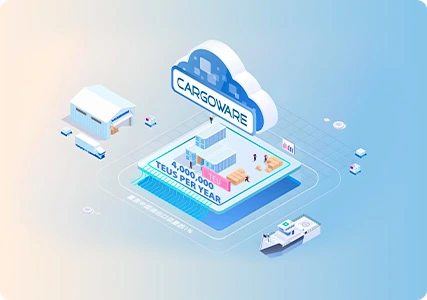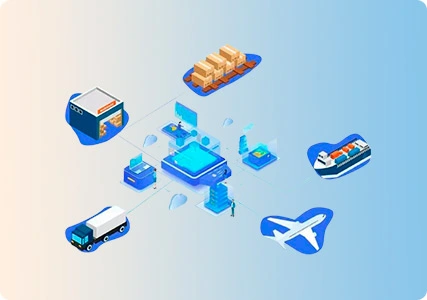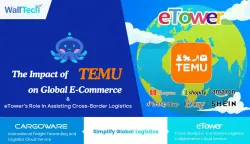
Cross-border e-commerce refers to the commercial activities of trade entities in different customs territories using electronic means to complete cross-border import and export trade.
Technological advancements in connectivity have contributed to the growth of global e-commerce, with mobile devices accounting for more than half of global online traffic in early 2021. Mobile commerce has become a normal way for many consumers to purchase goods. This trend will continue to expand in cross-border markets with the introduction of e-wallets and simple global payment solutions like PayPal, Google Pay, Skrill, credit cards, and bank transfers for online retailers.
The capabilities of logistics and delivery management companies have also improved the way we receive goods and the timeliness of delivery. With more companies offering a range of parcel delivery services, consumers have greater control over their deliveries, ensuring flexibility in terms of timing and location, catering to their lifestyles.
When online retailers focus on creating solutions tailored to the local market they are selling to, improved sales are likely to follow.
Challenges of cross-border e-commerce include:
1. Demand from overseas markets: Different regions have varying tastes and preferences, so it's important to ensure there is demand and a customer base for your products in your target overseas markets.
2. International restrictions: Before establishing an e-commerce business in a particular country, it's crucial to check the local regulations governing e-commerce operations.
3. Shipping: Determining how to deliver products to customers is essential. Assess whether you can directly ship to target countries or if you need to partner with a third-party logistics service. Consistent and predictable logistics are almost a requirement for successful cross-border e-commerce.
Cross-border E-commerce Logistics
1. Direct shipping includes postal parcels, commercial express delivery, and international lines, each having advantages in terms of coverage, timeliness, and cost-effectiveness. International postal parcels occupy a dominant position due to their global transportation coverage and relatively lower prices. Commercial express delivery is dominated by major companies such as DHL, TNT, UPS, and FedEx. They typically have their own global networks, robust IT systems, and localized services to ensure timeliness and reduce the risk of package loss, but certain restrictions may apply to certain goods. International lines collaborate with airlines and local express companies in the destination country, enabling large-scale transportation at lower costs compared to commercial express delivery, with higher timeliness than postal parcels. Currently, international lines lead in terms of market size growth rate.
2. Consignment, also known as overseas warehousing, allows sellers to pre-stock goods in warehouses in the destination country and have the warehouse represent the seller for delivery to local consumers. This reduces costs and improves overall efficiency.
3. Among the consignment models, Fulfillment by Amazon (FBA) is a popular overseas consignment model among small and medium-sized sellers. It involves sellers choosing to use Amazon's own logistics model, sending goods in bulk to Amazon warehouses in the destination country for storage. Once a consumer places an order, Amazon takes care of order picking, packaging, and delivery.
4. Exclusive overseas warehousing is a common storage model among large sellers or logistics service providers. It involves sellers or logistics service providers establishing their own warehouses in the destination country and pre-stocking goods. Once a consumer places an order, the goods are picked, packaged, and delivered. The drawback of this model is the relatively higher cost of establishing and maintaining own warehouses.
In recent years, there has been a growing popularity of combining international lines with overseas warehousing models among larger sellers. This model's main advantage is its suitability for handling a large volume of parcels and quick order delivery as needed.
The Rising Popularity of Third-Party Warehouses in Global E-commerce Logistics
Overseas warehousing consignment models involve three main stages: inbound transportation, warehouse management and end-to-end delivery, and information updates.
1. Inbound transportation refers to the stage of transporting goods from the originating country to overseas warehouses via sea, air, land, or multimodal transportation.
2. Warehouse management involves remote operations of goods in overseas warehouses by sellers/logistics service companies through logistics systems, enabling real-time inventory management.
3. End-to-end delivery involves allocating goods to customers through local postal or courier services based on order information.
The rapid development of cross-border e-commerce has driven significant expansion in the cross-border logistics market. Therefore, addressing the key pain points in cross-border logistics is crucial for enhancing the stability and scale of cross-border e-commerce. While the above introduction covers current cross-border e-commerce logistics models, understanding the logistics models for cross-border e-commerce exports is just the foundation. The cross-border e-commerce market is vast, offering more opportunities, and an increasing number of participants are choosing to enter this field. For those interested in engaging in cross-border e-commerce exports, managing cross-border logistics is a critical component.
eTower provides comprehensive data collection capabilities for cross-border e-commerce logistics companies and supports all existing forms of cross-border e-commerce logistics. If you have any questions regarding cross-border e-commerce logistics, please visit our official website at www.etowertech.com or feel free to contact us at etowermkt@walltechsystem.cn.










